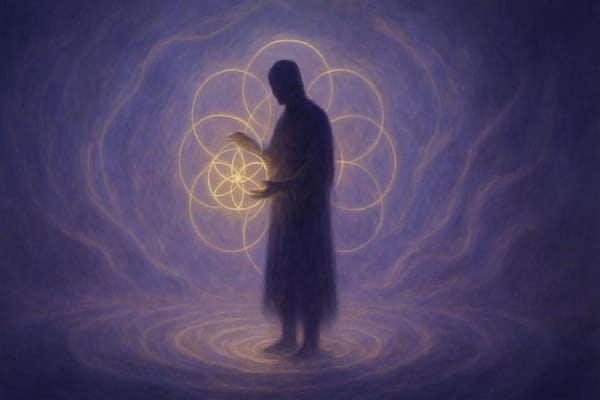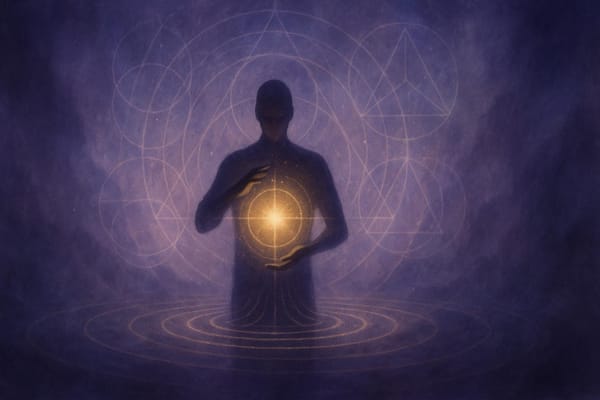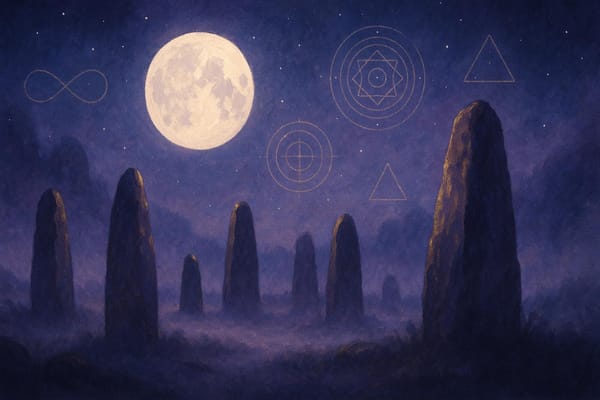Sacred Sites in the Simulation: Are These Places Programmed Differently?
Could sacred sites be more than ancient architecture? In a simulated reality, these places may function as energetic interfaces, code injections, or player portals. Here's what the metaphysical grid reveals about the hidden logic of power places.

If we’re living in a simulation — a programmable, interactive, layered reality — then not all places are built the same. Some function like passive background code. Others? They feel alive. Interactive. Intentional.
They call. They shift your frequency. They respond to your thoughts. You walk into them and time warps, dreams intensify, synchronicity explodes. These are the sacred sites — temples, mountains, stone circles, shrines — that seem to sit outside the usual rules of the game.
Could these places be more than spiritually potent? Could they be code-level anomalies — sacred patches in the simulation architecture?
Let’s follow the current across grid lines, quantum overlays, NPC fields, and ritual logic to explore whether these power places are programmed differently — and why that matters.
First Principles: If This is a Simulation, What is Sacred?
Simulation theory proposes that reality is not “real” in the physicalist sense, but rendered — the way a game engine renders an environment depending on player interaction, memory usage, or coded logic.
In this worldview:
- Objects = stable code fragments
- People = avatars (with or without player input)
- Physics = a rule set
- Consciousness = a higher-dimensional user, interfacing through a body
In such a system, sacred sites may represent:
- Special access points to hidden layers of code
- Energetic terminals for frequency-based interaction
- Update servers or resonance stabilisers
- Player portals or memory beacons
Not every site fits this model. But some — Giza, Uluru, Delphi, Mount Shasta — behave more like network nodes than static monuments.
The Grid as Code Architecture
Sacred geography has long hinted at a planetary energy grid — ley lines, dragon lines, telluric currents — flowing like subtle circuitry across the Earth. Ancient cultures aligned temples, tombs, and standing stones to these lines with mathematical and astronomical precision.
In a simulation model, these lines resemble:
- Code pathways — channels through which information or frequency flows
- Quantum overlays — multidimensional harmonics layered onto the base map
- Rendered terrain anchors — ensuring coherence in high-intentionality zones
Power sites are often located where multiple lines intersect. These nodes may operate like:
- Access portals (spiritual download zones)
- Update points (to shift the local “field”)
- Override spots (where players can rewrite their local code)
In short: the grid is more than mystical metaphor. It may be the interface logic of this level of reality.
Why the Simulation Treats These Sites Differently
The “engine” of a simulation renders most environments passively — until a player arrives. But what if certain sites are always active?
These places may be coded to:
- Run background processes (planetary field stabilisation)
- Function as high-density memory locations (like caches of wisdom or pattern)
- Serve as catalysts for spiritual or narrative awakenings
It’s no accident that many initiations, visions, revelations, and awakenings happen in places like Sinai, Iona, or Sedona. These are interruption zones — scripted or responsive spaces where the veil thins and the system offers access to deeper menus.
You didn’t just visit. You triggered a sequence.
Sacred Sites and NPC Activity
In simulation theory, NPCs (non-player characters) are code-based entities with limited free will — often background actors. In the spiritual sense, this can be interpreted as people who are:
- Not fully conscious
- Functioning in loops or limited behavioural scripts
- Lacking inner responsiveness to metaphysical fields
Here’s where it gets interesting:
At sacred sites:
- NPCs often can’t feel the field
- Or they become agitated, tired, or avoidant
- Or they suddenly act as mirrors, messengers, or disruptors
This mirrors how background code reacts to high-frequency anomalies in a simulation: either ignore, resist, or reorient.
That’s why sacred sites can be intensely lonely, deeply connecting, or unpredictably chaotic depending on who shows up. The site is running a high-frequency protocol — and not all system actors can meet it.
Quantum Anomalies and Ritual as Code Injection
Many sacred sites are places of ritual — chanting, drumming, offering, breath, geometry, silence. These aren’t just religious acts. In simulation terms, ritual is a code injection.
It:
- Raises coherence
- Aligns intention and frequency
- Creates a specific input at a specific location
And when input is matched to location, the field responds.
That’s why walking a labyrinth, chanting in a stone circle, or meditating at sunrise on a mountain often produces vision, clarity, or reality ripple. You’re not praying. You’re programming.
Sacred sites, when approached this way, become developer portals — allowing access to higher systems, debugging loops, or storyline upgrades.
Earth as Operating System — And You as Plug-In
The Earth is not just terrain. It’s an operating system for human experience.
You, as a conscious node, are a plug-in.
When you visit a sacred site with intention, coherence, and presence, you:
- Align your local frequency with the grid
- Activate the site’s dormant code
- Send feedback to the larger simulation
The site, in turn, may:
- Mirror your state
- Offer a frequency download
- Shift your narrative arc
- Or unlock ancestral or soul-level memory
This is not superstition. It’s experiential interface logic.
Glitches, Shifts, and Code Residue
Some visitors to sacred sites report:
- Time distortion
- Visionary dreams
- Sudden emotional releases
- Vivid synchronicities afterward
- A sense of being “seen” by the land
These are not just metaphysical — they’re system events:
- Time dilation = local render variation
- Emotional release = cache clearing
- Synchronicities = code anchor propagation
- Seen by the land = simulation’s adaptive narrative responding to your presence
In this way, sacred sites act as debug points — soft resets or branch initiators in the player’s timeline.
Why It Matters Now
We are living in a time of narrative collapse. The old scripts don’t work. Many are waking up inside the system and wondering: what now?
The answer may be simple: go to the places that were built for remembering.
Not because they are magical. But because they are interactive nodes. They’ve been waiting — encoded into the architecture of the world for this very moment.
They are not just holy.
They are anchored override points.
Final Thought: Don’t Just Visit. Activate.
Next time you walk into a stone circle, step into a forest shrine, or climb a sacred mountain, ask yourself:
- Am I here to see? Or to be seen?
- Am I asking for magic? Or ready to run code?
- What if this is a memory point — and I’ve been here before?
Because in the simulation, nothing is random.
Especially not the places that still hum when you close your eyes.
You are not just a player.
You are a key.
And sacred sites?
They are the doors that still respond when everything else feels flat.
Ready to step beyond information and into activation?
This blog is part of an ongoing personal study — a living exploration of simulation theory, manifestation, and reality-bending. If something here resonated, you’re not here by accident.
Join the journey.
Get deeper insights, tools, and transmissions delivered to your inbox: no noise, no fluff — just real signals for seekers.




